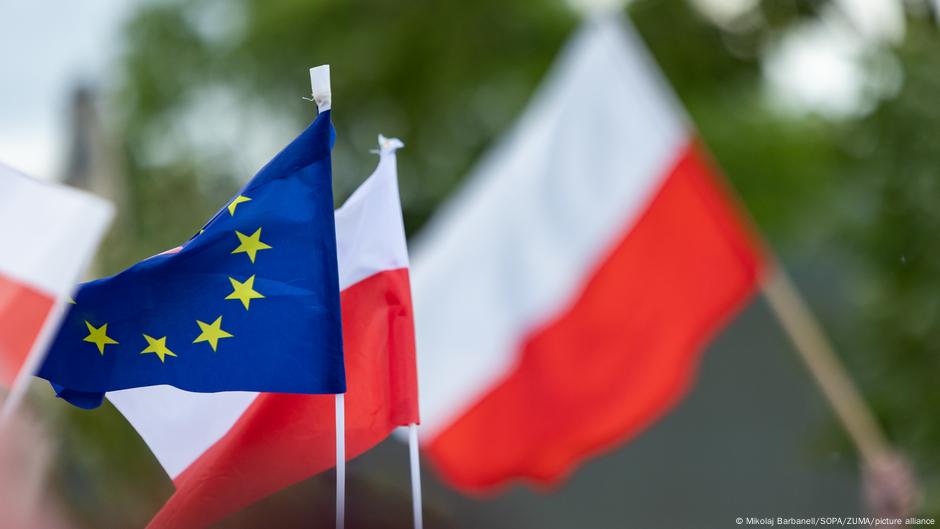In an era of existential economic pessimism across the EU, one of its largest members has been consistently posting positive numbers: Poland.
Its GDP growth rate of almost 3% in 2024 puts it ahead of the overall EU rate of 1%, as well as the bloc’s two largest economies, France and Germany. France recorded a rate of 1.2% while Germany suffered a contraction of -0.2%.
The signs for 2025 are also positive. Poland recorded growth of 0.8% in the second quarter, the fifth best rate in the EU. This year a growth of around 3.3% is expected and for next year a rate of 3% is expected.
It’s not an overnight success either. Since joining the EU in 2004, average annual growth has been almost 4%, a rate that has greatly accelerated over the last decade.
However, there is currently a particular push. Its stock market has been rising and optimism is growing about its ability to become one of the strongest and most dynamic economies in the EU.
“Over the past two decades, Poland has clearly outperformed,” Katarzyna Rzentarzewska, chief macroeconomic analyst for Central and Eastern Europe at Erste Group, told DW.
“Real GDP doubled. This is something extraordinary. Obviously, it is part of a convergence process, but overall Poland stands out.”
size matters
Jacob Funk Kirkegaard, a nonresident senior fellow at the Peterson Institute for International Economics, says Poland’s success has been mirrored to some extent in other Eastern European and Baltic states, but that its size is a key difference.
“Poland is big,” he told DW. “So it actually matters, if you will, at an aggregate EU level, in a way that a much smaller economy doesn’t, both politically and as a matter of economic weight.”
Poland has a population of 37 million, the fifth largest in the EU. Its economy is now among the top 20 in the world in terms of GDP.
Added to its growing economic weight is its strategic and geopolitical importance. In recent years it has boosted defense spending to the point that it is now number one in NATO in terms of the proportion of GDP it spends on defence, currently around 4.5%.
Much of defense spending goes to foreign orders rather than domestic production, but Rzentarzewska says much of Poland’s growth is driven by private consumption within the country, rather than exports.
“It is the pillar of growth,” he says, noting that Poland’s strong domestic market can be seen in its low unemployment and strong real wage growth. It also gives you the ability to be relatively protected from external crises.
“When you see a global slowdown, obviously the first to be affected are the smaller, export-oriented economies, because that’s how the value chain works,” he said. “In Poland’s relatively closed economy, consumption remains strong.”
An integration model
So what exactly has Poland got right? Rzentarzewska sees its successful integration into the EU, NATO, Schengen Area and OECD as key to its success.
“If we look at the broad concept of integration, Poland did very well,” he says. Although it did not join the eurozone, it has benefited from extensive EU funding since joining in 2004.
“We cannot deny that access to European funds was enormous and contributed significantly to growth,” he says. Kirkegaard agrees, saying Poland “has gotten the basics right.”
“They have used EU funding to significantly improve their infrastructure,” he says. “They have completely eradicated the street corruption that was prevalent during the communist years. They have basically managed to create a very welcoming business environment. They have a generally well-educated workforce.
“Poland is a model of successful integration into the EU. They needed to do it well because they are so big. And they did it well.”
Political division threatens EU funds
However, there are potential obstacles. For much of the last two decades, Poland has been politically divided between a large right-wing bloc, led by the populist and conservative Law and Justice party, and a center-left liberal bloc, currently led by Prime Minister Donald Tusk’s Civic Coalition.
Tusk’s coalition is more pro-EU and his group’s victory in the 2023 parliamentary election was seen as helpful in securing longer-term EU funding for Poland, given Law and Justice regularly entered into disputes with Brussels over judicial independence when it was in power.
The victory of Karol Nawrocki in the 2025 presidential election, a Eurosceptic independent candidate who was supported by Law and Justice, was seen as potentially damaging for Poland’s future relations with the EU.
Weeks after taking power in 2023, Tusk was able to convince the European Commission to release €137 billion in funding, provided he brought Poland’s judicial system back into line with EU standards and rules.
However, his attempts to consider the possible removal of judges appointed during the Law and Justice period in government are putting him in direct conflict with Nawrocki.
However, Rzentarzewska says that despite its political divisions, Poland has made economic progress under both blocs. “Poland is a good example of how progress and dynamic growth can be achieved under different parties or political orientations, whether conservative or more liberal,” he said.
The new Germany?
She says additional spending on social care, such as child benefits introduced by Law and Justice, has been beneficial and helped boost the economy.
However, it also warns that the additional spending, combined with increased defense spending and the post-pandemic inflationary shock, has contributed to a difficult fiscal situation in Poland.
According to recent plans presented by Polish Finance Minister Andrzej Domański, Poland’s public deficit will be 6.5% of GDP in 2026.
Rafal Benecki, chief Poland economist at ING, says Poland’s strong growth rate means rating agencies and investors generally are not worried, but believes the country needs “a compelling fiscal adjustment plan to boost confidence.”
“Poland will have to address this,” says Rzentarzewska. “You will need to undergo fiscal consolidation, fiscal austerity, and this is, naturally, something that can slow growth.”
But he stresses that the current feeling of confidence is justified. “The low unemployment rate, consumer confidence and, crucially, high productivity, all of that adds to the overall sentiment, the positive sentiment and the performance of the economy.”
Kirkegaard agrees, saying Poland can teach the rest of the EU a lot about economic dynamism and flexibility.
“There was a time when Michigan and what is now the Rust Belt in the United States was the economically dominant part of the American economy,” he said. “That is no longer the case.
“But if Germany is assumed to be incapable of reform and Poland continues to act as it has since becoming a member of the EU 20 years ago, then it will eventually eclipse countries like Germany, which could become Europe’s industrial belt.”
Edited by: Kristie Pladson



